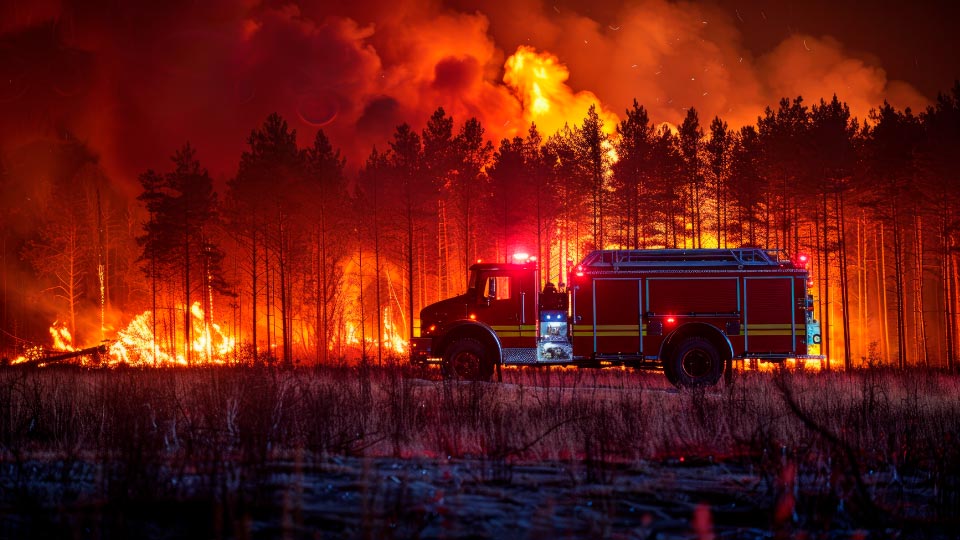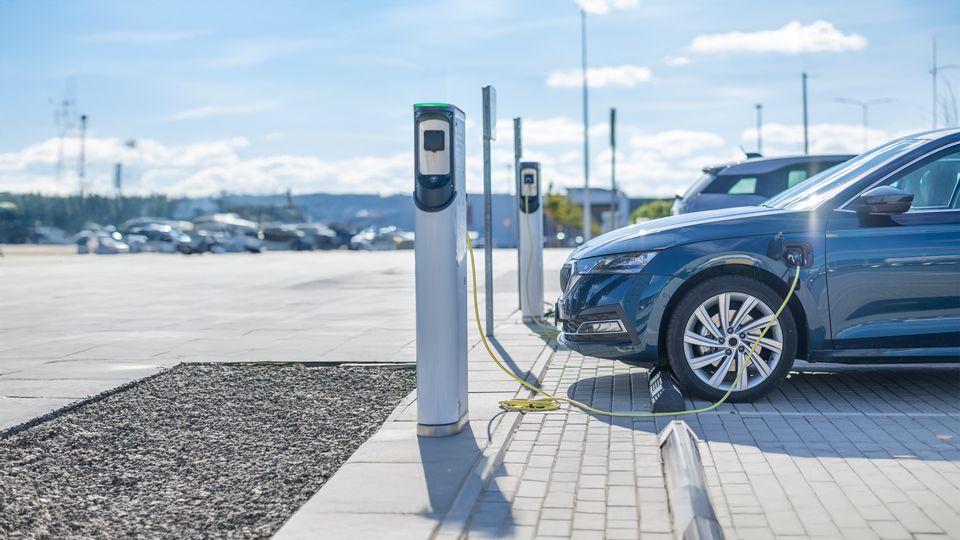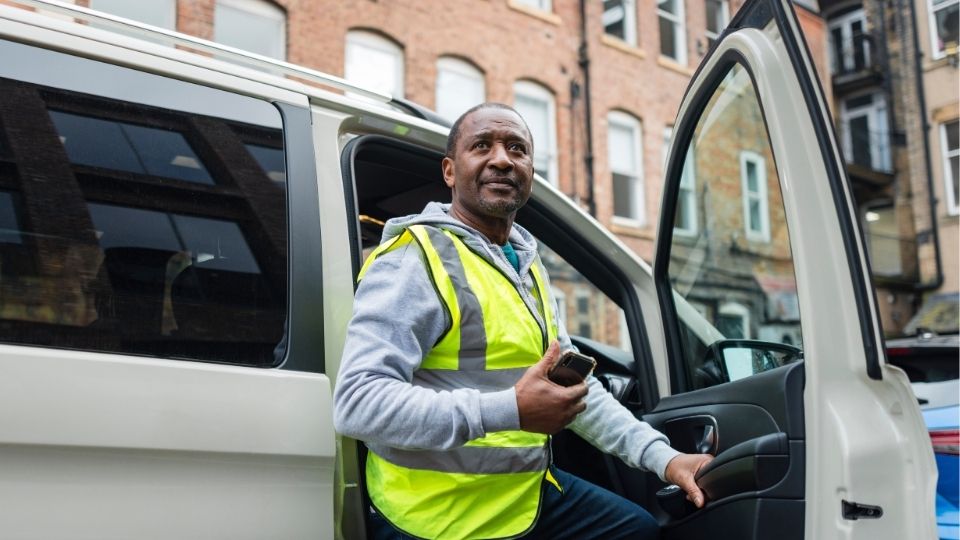Nathalie Crewes on the Role of Data Insights for Fleet Safety During Wildfires
When every minute counts: Emergency Preparation, response and recovery
%20Photo.jpg)

As North America faces one of its most intense wildfire seasons, the role of public and emergency vehicles is critical in combating these fires and ensuring the safety of communities. Fire trucks and engines, ambulances, police vehicles, and other public support vehicles are deployed to manage the ever-increasing environmental impact of forest fires and severe weather in hundreds of communities. The National Interagency Fire Center (NIFC) reports nearly 22,000 firefighters and support personnel are currently battling wildfires across the U.S. with significant resources deployed including 1,260 engines and numerous aviation assets (National Interagency Fire Center).
How Do Public & Emergency Fleets Ready Themselves?
Telematics solutions are essential in providing fleet managers and frontline command staff with real-time data and insights, ensuring that emergency vehicles are always primed for rapid deployment. This capability guarantees that first responders are fully equipped and prepared to be deployed to forest fires. With vehicles pre-checked for any maintenance issues and ready to move swiftly and safely, these solutions are critical to effective and safe emergency response.
The City of Austin, Texas, experienced remarkable fleet improvements, noting that telematics helped to reduce their idling by 27%, which is crucial for cost-effective fuel usage during extended deployments in emergencies like forest fires or in the case of Austin, a once-in-century winter storm in 2021.
Prepare
Preparation is the cornerstone of an effective emergency response, especially when it comes to deploying first responders to a forest fire. In these high-stakes situations, there's no time for last-minute maintenance checks; vehicles and equipment must be ready to deploy as soon as the call comes in.
By leveraging a powerful AI-enabled telematics platform, first responders can proactively monitor and maintain their fleet, ensuring that all vehicles are in peak condition. This technology provides real-time insights on critical maintenance metrics such as tire pressure, engine oil life, brake check schedules, suspension and engine fault incidents. With these insights, fleet managers can address potential issues before they become problems, reducing downtime and ensuring that emergency vehicles are always ready to go as soon as the call comes in. This level of efficiency is key for first responders to effectively fight forest fires and protect communities in need.
Respond
Reaching remote and hard-to-access sites, navigating road closures, and battling ever-changing weather conditions are some of the significant challenges faced by first responders during forest fire deployments. By providing real-time vehicle tracking, these systems enable agencies and dispatchers to monitor vehicle locations instantly, ensuring that drivers are accounted for and can receive immediate assistance if they encounter issues or other hazards on the road. This level of real-time visibility is crucial for maintaining the safety of first responders as they navigate the unpredictable conditions of forest fires.
Recover
In the recovery phase, telematics solutions play a vital role in facilitating the efficient and safe restoration of services and infrastructure damaged by fires.First responder crews will be able to use incident reporting tools powered by telematics data, enabling fleet managers to quickly and accurately report the extent of the damage, determine possible access for any recovery crews and utility teams and provide management with a solid understanding of how long and where each unit was deployed during the emergency response. In addition, telematics helps teams to reconstruct events, to understand the sequence of events during the response including post incident assessments, detailing trip histories and analyzing g-force data from any sudden stops or impacts. This is valuable insight that can be used for coaching purposes in any future incident training.
Conclusion
Forest fires are more widespread, burning nearly twice as much tree cover today as they did 20 years ago.It is not a matter of if, but how soon another forest fire will occur. The use of data insights enables emergency fleets to be at the ready, to learn from past incidents, and be better prepared for the future. It's about making an impactful difference when it matters most.
Subscribe to get industry tips and insights
%20Photo.jpg)
With extensive experience in the public safety sector in the UK and now calling Canada home, Nat has been a passionate advocate for the integration of innovative technology solutions to enhance public safety operations. Nat has delivered localized end-to-end telematics and technology services to various agencies across North America, significantly improving operational efficiencies and safety for these public safety teams. As a speaker at many telematics and technology conferences, Nat is a huge supporter for the responsible use of technology to benefit front-line public safety operations. Leveraging technology to ensure public safety teams work more safely and with greater transparency is a key part of Nat's role here at Geotab.
Subscribe to get industry tips and insights
Related posts

Enhancing winter road maintenance with postseason materials usage analyses
June 20, 2025
6 minute read

The fleet safety incentive program checklist for driver engagement that lasts
June 19, 2025
2 minute read

Beat the Heat: Easy Ways to Maximize Your EV Range This Summer
June 19, 2025
2 minute read

Building a self-sustaining school bus driver safety program with Geotab Vitality
June 13, 2025
7 minute read

Small Steps, Big Impact: The Transformative Power of AI in Field Service
June 11, 2025
2 minute read
